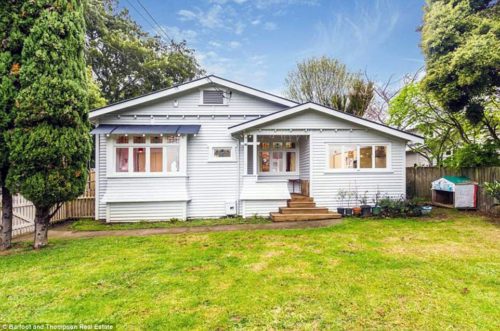
As alluded to in the previous section, a New Zealander’s tenure of dwelling is primarily a function of their socioeconomic status, with the wealthy likely to be freehold, the next most wealthy likely to be mortgaged, and the poorest likely to be paying rent.
That Kiwis of European descent are well-established as the land-holding class is a fact well known. The correlation between being of European descent and living in a freehold house was a very strong 0.78. There was also a positive, but not signficant, correlation of 0.11 between being of European descent and living in a mortgaged house, and a strong negative correlation of -0.68 between being of European descent and living in a rented house.
There were significant negative correlations between every other ethnicity and living in a freehold house. Even the correlation between being Asian and living in a freehold house was significantly negative, at -0.34, despite that the average Asian in New Zealand is fairly middle-class. The correlation between being Maori and living in a freehold house was -0.52, and with being a Pacific Islander and living in a freehold house it was -0.56.
Because we know that most recent immigrants to New Zealand are Asians or Pacific Islanders, these statistics tell the story of how opening the immigration taps has been immensely profitable for the land-holding class, who were then able to charge much higher rents on account of the much higher demand for housing.
Even stronger, and perhaps even less surprising, is the correlation between median age and living on freehold land – a whopping 0.90. The obvious reason for this is people saving their wage or salary for much of their lives for the sake of being able to buy some land and no longer being forced to pay rent.
Mirroring this was the almost as strong negative correlation between median age and living in a rented house – this was -0.86. There is equally little surprising about this statistic because the majority of New Zealanders leave home as soon as they are able, and very few of these move directly into a mortgaged house (much less a freehold one).
Curiously, a person with School Certificate as a highest academic qualification is more likely to live in a freehold house than a person with a doctorate. The correlation with the former is 0.23 and the correlation with the latter is 0.07.
Some might find this very surprising considering that there is a strong correlation between education and wealth and another strong one between wealth and homeownership. The reason for it is that, when it comes to living on freehold land, age trumps both of those things, even added together.
Likewise, it can be seen there is a stronger correlation between living on freehold land and working in agriculture, fishing or forestry (0.32) than there is between living on freehold land and working in a plum industry like information media and telecommunications (-0.38), financial and insurance services (-0.30) or professional, scientific or technical services (-0.16).
Again, the reason for this is mostly because working in those latter three industries generally requires an advanced degree, and these degrees are mostly held by people too young to have saved the capital to secure freehold land.
One statistic that seems amazing when taken out of context is that only Kiwis in the $15-25K income brackets have significant correlations with living in a freehold house, and that only Kiwis in the $50-70K income brackets have significant correlations with living in a mortgaged house.
That might seem strange until one notices the very strong correlation of 0.82 with living in a freehold house and being on the pension.
Seen like that, it seems a bit strange that pensions are much higher than student allowances, despite being paid to people who also do not have to pay rent out of their benefit as a general rule. Then again, the General Disenfranchisement Rule tells us how such a state of affairs came to pass.
*
This article is an excerpt from Understanding New Zealand, by Dan McGlashan, published by VJM Publishing in the winter of 2017.
